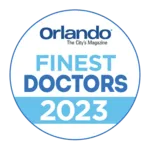Types of Rhinoplasty Surgery
Types of Rhinoplasty Surgery
- posted: Oct. 22, 2023
There are several types of rhinoplasty surgery. A rhinoplasty is a surgery to change the exterior shape of the nose (a cosmetic rhinoplasty) and/or interior passageways of the nose (called a functional rhinoplasty). It is one of the more common cosmetic surgeries to be performed in the US.
Cosmetic surgical rhinoplasty can help address:
- Nose size in relation to facial balance
- Nose width at the bridge or in the size and position of the nostrils
- Enlarged, bulbous, drooping, upturned or hooked nasal tip
- Large, wide or upturned nostrils
- Nasal asymmetry
Functional rhinoplasties are directed at structural problems affecting the airflow passages of the nose with the end goal of helping patients breathe better. They are often combined with septoplasty. Improvement in nasal appearance is an additional effect on these functional procedures. Rhinoplasties are performed by either a general plastic surgeon or an otolaryngologist with training in facial plastic surgery. Jeffrey J. Lehman, M.D., F.A.C.S., a board-certified otolaryngologist at The Ear, Nose, Throat and Plastic Surgery Associates, is one such otolaryngologist with years of education, training and subsequent experience in facial plastic surgery with a concentration on rhinoplasty.
In Dr. Lehman’s practice, a large number of the cases he sees are for functional rhinoplasties.
“A functional rhinoplasty is oftentimes combined with a septoplasty as well which corrects the wall that divides the nose in two halves internally,” he says. “A functional septorhinoplasty can certainly positively affect the way the nose looks as well, but our primary reason for doing it is because of a severe enough external nasal deformity that it significantly affects function.”
Types of Rhinoplasty Surgery
According to Dr. Lehman, there are two main approaches to surgical rhinoplasty: the closed approach (endonasal) and the open approach (external).
Endonasal Approach
All surgical incisions made for the endonasal approach are made inside of the nostrils. The parallel incisions encircle about half of the nostril lining, but no part of the incision can be seen externally and there is no visible scar. Although not having a visible scar can be a major benefit, there are considerable challenges and technical limitations associated with this approach.
Repositioning the nasal skin is difficult and the right and left nostrils stay disconnected, so the whole procedure has to be done through narrow surgical openings with limited visibility. Distortion of the nasal cartilage is also inevitable because accessing the nasal framework requires vigorous stretching of the nasal skin.
“With the closed approach, the healing, swelling and the changes in the nose occur over a period of about six months,” explains Dr. Lehman.
External Rhinoplasty
With an external rhinoplasty, the surgeon makes a small bridging incision, called a trans-columellar incision, to adjoin the right and left nostril incisions. The nasal skin can be folded upward and provide open visibility of the lower nasal structure. The open rhinoplasty approach allows for minimal distortion of the nasal cartilage and most individual components of the nasal skeleton can remain undisturbed.
“With the open approach rhinoplasty, because of the elevation and the extra incision that’s present, there tends to be more swelling at the tip of the nose that lasts for a longer period of time,” explains Dr. Lehman. “The appearance after an open approach rhinoplasty can undergo some degree of change for as much as two years.”
An external rhinoplasty may involve external scarring, but the approach may be more accurate, versatile and effective for nasal tip work because the surgeon has complete visibility while reshaping the nose.
Recovering After Rhinoplasty Surgery
Rhinoplasties are almost always an outpatient procedure, meaning patients go home later the same day following the surgery.
Patients typically experience a mild to moderate amount of pain or discomfort for the first 3 days following the surgery. Oral pain medications like Tylenol with codeine are usually sufficient to manage the discomfort.
“Most patients generally feel much better just a few days following their procedure,” Dr. Lehman says. “Pain with a rhinoplasty is more than if we just do internal nasal surgery, but most people are past the majority of that by the end of the first week.”
Patients can expect their recovery to follow this timetable:
Day 1: Return home and use cool compresses for 24 hours. Mustache dressing should be changed as often as needed. Some swelling, bruising and discomfort should be expected.
Days 2-3: The majority of the bruising and swelling will occur during this time.
Days 5-14: External stitches should be removed or dissolved. The internal and external dressing will be removed by the otolaryngologist, and bruising should subside.
Weeks 2-4: The majority of the swelling should disappear and breathing should be improved.
To facilitate a successful recovery, Dr. Lehman suggests taking at least a few days off from work following surgery. Most people take two weeks off, to allow for the resolution of most of the bruising and swelling before facing the public.
Most patients will notice results when the swelling begins to go down, but Dr. Lehman says it may be up to a full year before the final results become apparent.
Ear, Nose, Throat and Plastic Surgery Associates, PA
Winter Park
133 Benmore Drive, Suite 100,
Winter Park, FL 32792
Altamonte Springs
107 The Hermits Trail,
Altamonte Springs, FL 32701
Celebration
400 Celebration Place, Suite A120,
Celebration, FL 34747
Contact Us
Office Hours
Monday
8:00 am - 5:00 pm
Tuesday
8:00 am - 5:00 pm
Wednesday
8:00 am - 5:00 pm
Thursday
8:00 am - 5:00 pm
Friday
8:00 am - 5:00 pm
Saturday
8:00 am - 12:00 pm
Sunday
Closed

